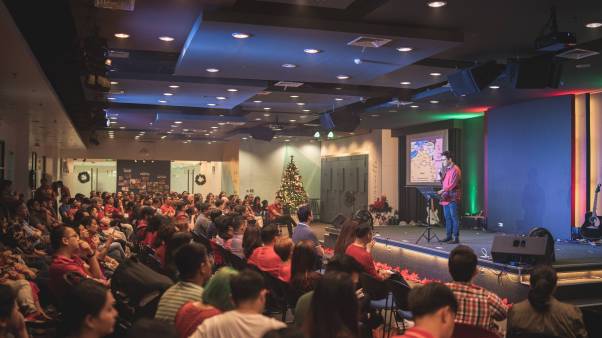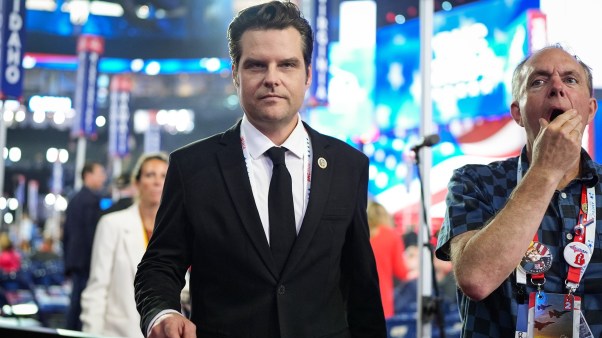In 2015, when retired Anglican priest Nelson Koscheski shared one of his religious poems with the young music director at his Anglican church in Dallas, he never expected the poem to become a folk song. Koscheski thought the poem, which is about the Transfiguration, might make a good hymn, but would probably end up like most of his others—glanced at perfunctorily and then disregarded.
But the music director, Ryan Flanigan, was so moved by the poem’s beauty that he set it to a simple folk tune, which he incorporated into the church’s Transfiguration Day service.
“For the first time, I realized that my poetry was a form of ministry,” Koscheski says.
Since then, Flanigan, now 39, and Koscheski, 77, have written almost 50 hymns together. Under Flanigan’s direction, the cross-generational partnership has grown into a multifaceted folk music project. The two named the project Liturgical Folk, and in 2017 released their first two albums through the producer Isaac Wardell, who works with acclaimed religious musicians like Josh Garrels and Sandra McCracken. Liturgical Folk released their third album last fall and their fourth this February.
They are not alone. Rather, they are part of a growing number of Anglican musicians who are rearranging traditional hymns, adapting liturgy to contemporary music and writing songs of their own, says Bruce Benedict, the chaplain of worship and arts at Hope College in Michigan and founder of Cardiphonia, which resources the greater church with liturgical music.
“Liturgical Folk is really just sort of one group of folks that have been doing this for 10 or 15 years,” he says.
How did this movement come about?
In the late 1970s, a group of Anglican churches in the US absorbed a group of the more charismatic evangelical Vineyard churches, says Benedict. Over time, worship leaders at these merged churches began writing music that incorporated both the language and liturgy of high church with the contemporary sounds of nondenominational congregations.
Individual churches produced their own regional sounds, Benedict says. Some leaned toward contemporary praise bands complete with electric guitars and drums, like Marty Reardon, the worship pastor of Trinity Anglican Church in Atlanta, Georgia; others tended toward more classical sounds, like the music coming out of Cathedral Church of the Advent in Birmingham, Alabama; and still others adopted a folk or bluegrass style, like Liturgical Folk.
While this charismatic liturgical resurgence—as Benedict unofficially christens it—is akin to the retuned hymn movement that came out of the Presbyterian church in the 1990s, it is slightly different. For one thing, these Anglican musicians are not merely setting old hymns to contemporary music. They are also rearranging liturgy and the Psalms and, in the case of Liturgical Folk, writing entirely new hymns that incorporate the language of liturgy and Scripture with a modern twist.
Indeed, this, along with Flanigan’s emphasis on teaching about liturgy at his concerts and the financial heft behind Liturgical Folk, distinguishes the group, says Benedict. Liturgical Folk is partially funded by the Anglican Mission in America, a church-planting organization that has its headquarters at All Saints Dallas, the church where Flanigan and Koscheski met.
Still, this resurgence remains a reaction to what some people feel is lacking in modern, evangelical worship music, says Zac Hicks, a songwriter, author, and canon for worship and liturgy at Cathedral Church of the Advent.
“We’re at a moment right now where people are really fascinated by Anglican liturgy,” Hicks says. Whether that’s a fad that wanes remains to be seen.
So far, listeners have responded positively to Liturgical Folk. Their first two albums did moderately well, with more than 700 sold online and at concerts and around 165,000 plays on major music platforms since their release.
The first, Table Settings, includes traditional prayers and creeds, like the Lord’s Prayer, Gloria, and Apostles’ Creed, set to various folk tunes cowritten by Flanigan and others. The second, Edenland, contains Flanigan and Koscheski’s hymns. These range from quiet melodies like “On Tabor,” the original song about Transfiguration, and honest laments like “A Hymn for Martyrs,” which bemoans the problem of evil.
The lyrics are unique (“Jesus, your name is like the Rose/Burst from the bud’s long hidden store”); the rhymes sophisticated (“With you, dear Lord, is peace and wholeness kept/And life is lived and grace not overstepped”); and the music affecting, provoking listeners to wrestle with deeper theological issues and better orient their hearts toward God.
The albums’ success convinced Wardell to produce two more, which the group recorded at a studio in Charlottesville, Virginia, last July. Flanigan and Koscheski broadened their partnership for these albums, inviting additional musicians like Garrels and Liz Vice to participate in creating and recording the hymns.
Liturgical Folk’s third album, Crumbs, which they released last fall, centers on the Eucharist. Several of the songs on this album deal with racial reconciliation, a theme that’s near to Flanigan’s heart. As an artist, he feels compelled to bring injustice into the imagination of the church.
Flanigan wrote the song “Lord, Lord, Lord” in the wake of Michael Brown’s death, as a communal confession for participating in the systemic oppression of African Americans. He also cowrote “You Make Us One” with Art Hooker, an African American filmmaker in Dallas, after the shooting at Emanuel AME Church in Charleston, South Carolina. For Flanigan, working with an artist from a different background added poignancy to its theme of racial reconciliation.
“It is a strong song to remind people what it means to be one,” explains Hooker, “and what Jesus said when he said you will be one [as] the Father and I are one.”
Similarly, despite the Anglican bent of the music, Flanigan and Koscheski hope people of all denominations and faiths will embrace it.
“There’s nothing exclusively Anglican in any of the songs,” says Flanigan. “We have a heart for ecumenism.”
If Crumbs and their fourth album, Lent, are well-received, the group plans to record two final ones. By then, Flanigan hopes that the name “liturgical folk” will be used to describe a genre of music, rather than their group. He hopes that churches of all denominations will incorporate liturgical folk music into their worship services and musicians of all kinds will write liturgical folk songs of their own. He recognizes with Benedict and Hicks that many artists have already been doing this, pointing to musicians like McCracken and Garrels as examples.
It’s a vision that others associated with Liturgical Folk share. Justin Brooks, a songwriter and worship leader at an Episcopal church in Dallas who often sings with his wife and children at Liturgical Folk concerts, points to the origin of the project as proof that this model works. Koscheski wrote a poem simply because it was Transfiguration Sunday, Brooks says. It was an authentic response to an event happening in his particular community.
“If we can encourage people in their communities to write and make any kind of art that is honest and pointing people toward something greater than themselves, that’s a beautiful thing,” he says.
“A few years from now I probably won’t be calling myself Liturgical Folk the artist,” says Flanigan. After releasing six volumes of music, he and Koscheski plan to move on to something else.
“These songs aren’t for me, necessarily,” says Flanigan. “These songs are for the whole church to sing.”
Elizabeth Hamilton is a writer living in Dallas.









